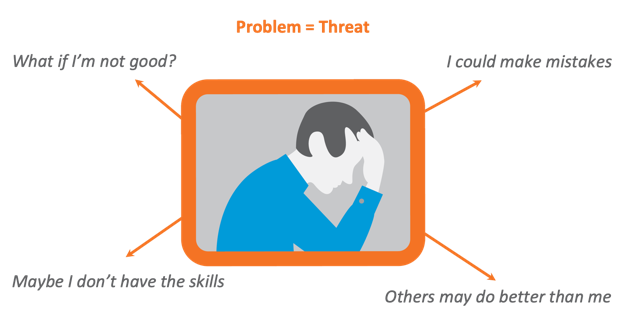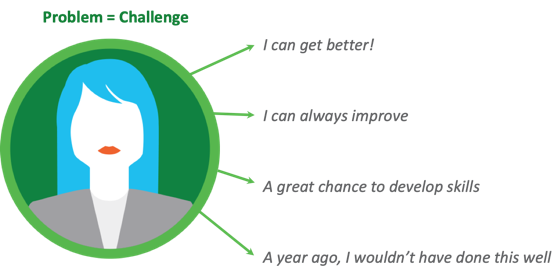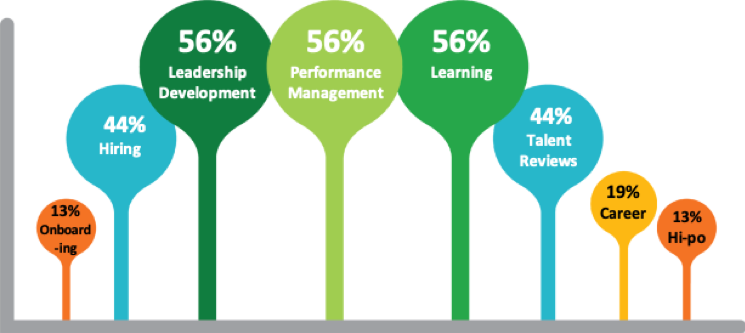Why Growth Mindset Now?

Dr. Andrea Derler
To say that businesses must navigate shifting landscapes borders on cliché; to say that they must learn from setbacks is obvious; and the need for resilience is as self-evident as the need for oxygen. Yet how to live up to these demands remains, for many leaders, is a mystery. And given culture’s nasty habit of eating strategies for breakfast, adapting to our turbulent times requires a set of shared everyday habits and systems that support them, rather than some batch of catchy talking points.
Enter growth mindset. Decades of scientific research into motivation indicate that a growth mindset, which holds that skills and abilities can be improved in ways that shape the purpose of the work that you do, leads to academic achievement, relational fulfillment, and professional success.
Researchers at the NeuroLeadership Institute have now investigated the latest applications of growth mindset through in-depth interviews with 20 organizations in the U.S., Australia, and Europe. The result is an expansive look at how the concept of growth mindset has evolved and how organizations are embedding it to support change and transformation efforts.
We are sharing some of the more important findings in this article, and the full report can be downloaded here.
What is Organizational Growth Mindset and what are its benefits?
We define an individual’s growth mindset as
“the belief that skills and abilities can be improved and that the development of skills and abilities is the goal of the work you do.” [1]
How does this belief manifest itself in real life? Well, a person’s mindset appears typically in situations that are new and/or difficult, and which can lead to one of two ways to respond. When in a state of a “fixed mindset”, the person will perceive the new situation as a threat, leading to distress and anxiety, an inability to listen and learn and make rational decisions.

Figure 1: Perceiving a problem as a threat (NeuroLeadership Institute 2019)
On the other hand, in a state of growth mindset, they can look at it as a challenge that can be mastered, leading to excitement and eustress[2] , helping them to be resilient and hopeful. The reason for this different reaction to new and difficult situations is the person’s fundamental belief that they can learn, they can get better, and that development and growth are natural elements of life.

Figure 2: Problem as a Challenge (NeuroLeadership Institute 2019)
Translated to the organization as a system, a culture of growth mindset is a culture in which
“all employees are seen as possessing potential, encouraged to develop, and acknowledged and rewarded for improvement.” [3]
The benefits of growth mindset cultures in organizations can be significant:[4]
- Workers have 47% higher trust in their company
- Workers are 34% more likely to feel a sense of ownership and commitment to the future of their company
- Workers show 65% stronger agreement that their company supports risk-taking
These attributes of growth mindset culture are critical to enable change processes, because employees with a growth mindset don’t feel like victims of, but co-pilots during change efforts.
A collective growth mindset can be created by teaching and encouraging certain behaviors that individuals, teams and whole organizations can continually adopt to shift their mindsets over time. Instilling the maxim that beliefs and attitudes must change from a rigid focus on perfection and results towards growth, teaching habits that support the emphasis on continuous development, and progress, experimentation and learning from others are some of the habits organizations can build.[5]
For example, one effective way to change the language in everyday meetings towards a more growth minded team culture happens through the introduction of “yet” to statements of limitation (“We can’t do this – yet”), and “what if” (“What if – we think about this differently?”) that can help stretch the team’s current thinking and overcome the perception of threat and anxiety in the face of challenges and change.
Organizations that have successfully begun to build an organizational growth mindset have shared the following advice:
Make certain that your systems enable the right behaviors!
Teaching employees about growth mindset is only the start. After teaching the fundamental scientific concepts of growth mindset, more than a third of companies we spoke with embed it in more than five touch points in the talent cycle: from onboarding to performance management to high potential selection and development.

Figure 3: Growth Mindset Adoption in Talent Processes (Industry Research, NeuroLeadership Institute, 2018)
New habits are easy to lose, and any organization’s work environment influences behavior change – or the lack of it. Hence, the integration of growth mindset principles in talent systems and processes matters, and adoption seems to be most frequent in Learning, Leadership Development and Performance Management.
However, many other talent processes can also be designed with a growth mindset approach: some companies hire talent based on behavioral interview questions meant to identify curiosity and a desire to learn without asking any questions directly related to fixed or growth mindset; other expose new hires to their strong growth mindset culture in onboarding programs, where they spend time defining, clarifying, providing examples of growth mindset behavior. Others again change their talent review processes by talking about perceived potential rather than evaluating performance, and their manager-coaching training provide growth-mindset-oriented coaching lessons, discussion guidelines, and a journal for managers.
For example, just a few months after HP Inc. separated from the tech giant Hewlett-Packard Company, the company was faced with the unique opportunity to reinvent HP’s culture and faced a profound (and all-too-common) organizational challenge: getting thousands of employees onboard with a brand new way of doing things. More than 4,700 managers went through the growth mindset learning program, but by ways of sustaining growth mindset as a cultural imperative, HP’s HR team embedded growth mindset into their performance management, coaching and career conversations, talent review processes, team and leadership development programs, as well as their talent acquisition approaches. As a result of these efforts, the company experienced a 22% boost in employee engagement scores, and won 77 awards for its range of innovative products. [6]
Ensure top leaders’ engagement and commitment
The support and active engagement from top leaders before and during growth mindset initiatives is the most frequently used method to raise interest and create purpose as top leaders communicate, teach, and role-model growth mindset through their organization.
Leaders can inspire change. Organizations use the commitment of their leaders in the growth mindset philosophy to spread the word and engage the workforce. They can use inclusive language such as “we” and “us” can create the sense that positive change is happening within organizations.[7] Research has shown that when followers feel they are part of the same group as the leader, they are more likely to be receptive to the leader’s propositions and ideas.[8]
For example, as the foundational culture attribute at Microsoft, growth mindset has been a critical focus of the company’s culture transformation and CEO Satya Nadella sparked the tech giant’s cultural refresh with a new emphasis on continuous learning four years ago.[9] He made it clear that a state of perpetual learning would be necessary for employees at all levels. In Nadella’s words, this strategic reorientation would require going from being a group of “know-it-alls” to a group of “learn-it-alls.”
With his sponsorship, the talent team, together with NeuroLeadership Institute,[10] has since worked meticulously on enabling growth-oriented business priorities, employees’ behavioral habits, and organizational systems for its workforce of 131,000 employees worldwide.[11] A range of approaches have since been taken to initiate and drive efforts for long-term change, starting with engaging senior leaders to talk about and role model growth mindset, employee-awareness campaigns to drive growth mindset adoption, and ongoing measurement of how the employees experience growth mindset in the company.
Microsoft sees continuous measurement as invaluable to its culture change. Daily pulse surveys constantly collect metrics of employee experiences of growth mindset all together, more detailed items such levels of risk aversion, visibly recognizing and learning from failure, or support in unlocking one’s ability. Favorability of growth mindset experience measurement has been trending between 78% and 80%, and it has been proven as the primary driver of the rest of the Microsoft culture attributes of customer obsessed, diverse and inclusive, one Microsoft, and making a difference.
Be clear and intentional about growth mindset
Why do organizations adopt growth mindset as an enabler of culture change in the first place? Knowing the purpose and strategic objective of culture change through growth mindset is a critical factor for the success of its implementation. We found that the top business driver for building a growth mindset culture is to enable digital transformation, followed by business improvement and quality enhancement initiatives, or overcoming start-up challenges and supporting organizational reinvention like in HPs case.
The reason is that a growth mindset catalyzes transformation. While change can cause people to fall into a threat response that makes them less able to learn, people with a growth mindset are more adaptable, able to recover from mistakes and failures, and begin again.[12]
Organizations working growth mindset concepts into their work and talent processes are operating in a variety of industries and adopt growth mindset for a variety of reasons: from improving operational excellence, enabling lean management, and fostering a more innovative culture, to supporting employees during significant transformation caused by artificial intelligence and other technologies and helping through a reorientation of the strategy, culture, purpose, and mission.
Most prominently, a global beverage company wanted to expand its repertoire and business potential beyond its traditional focus areas. Already heavily invested in big data and artificial intelligence for product development and other work streams, the company put a renewed emphasis on becoming a “growth company.” This meant being more agile and more attuned to feedback in order to adapt. The strategy was twofold: staying true to its well-known brand and building confidence on Wall Street by continuing to be an innovator and market leader.
From the start, the CEO considered building a growth mindset culture an invaluable part of the strategy for employees at all levels. The culture-transformation effort began with the definition of “growth behaviors,” as in curiosity, empowerment, iteration, and inclusiveness. It was implemented with the strong support of business leaders and dedicated change agents. It also involved embedding growth mindset into talent systems, from hiring to performance management and leadership development.
Finally: What to do when you spot a fixed mindset?
A collective belief in the need for continuous progress and development, collaboration and experimentation helps build resilience, agility, and mental flexibility that help overcome problems that can occur during significant organizational transformation. But we all carry fixed and growth mindsets about all sorts of abilities, from cooking to public speaking. When stumbling over a fixed mindset in yours, of your team’ thinking, you can take action.
Here’s a simple plan:
- Understand that this is normal. It’s virtually impossible to not care about proving that you have ability — to yourself and others. It’s human.
- Recognize the good news. You have a choice: You can choose to think differently and focus more on your growth. But habits take time to break.
- Be patient with yourself and other when trying to build this new habit. It won’t be an overnight change.
- Shift your thinking. A phrase that you can rely on — a mantra of sorts — can help. Remind yourself and others that “It’s not about being good — it’s about getting better.” Or that this uncomfortable experience is “an experiment, an opportunity to be creative.”
Remember: It’s not about proving yourself to others.
Instead, improve yourself.
Dieser Beitrag basiert auf proprietärer Industrieforschung des NeuroLeadership Instituts (New York). Die Studienleiterin Dr. Andrea Derler ist eine Alumna der FernUniversität in Hagen und eine ehemalige Doktorandin von Prof. Jürgen Weibler.





